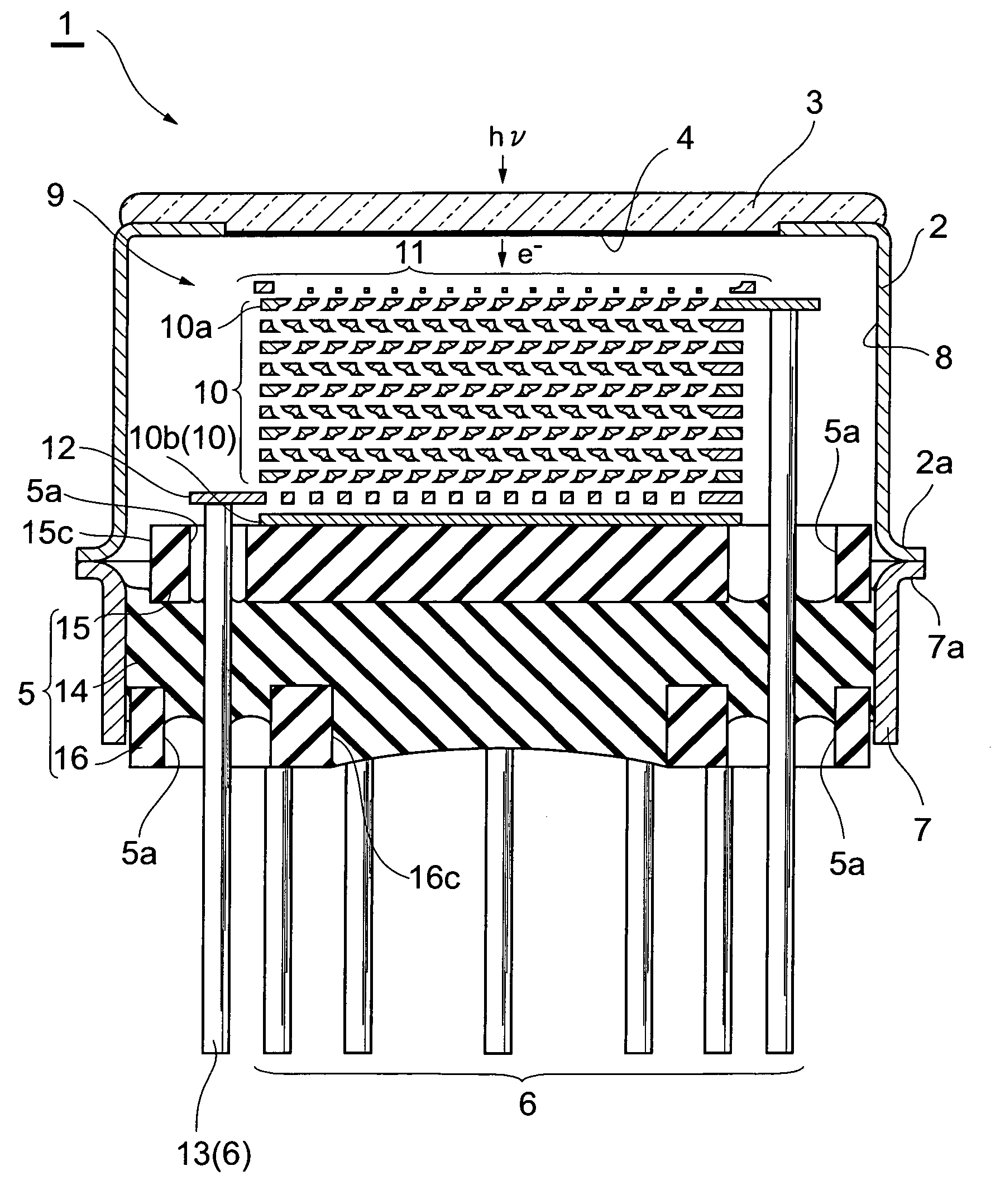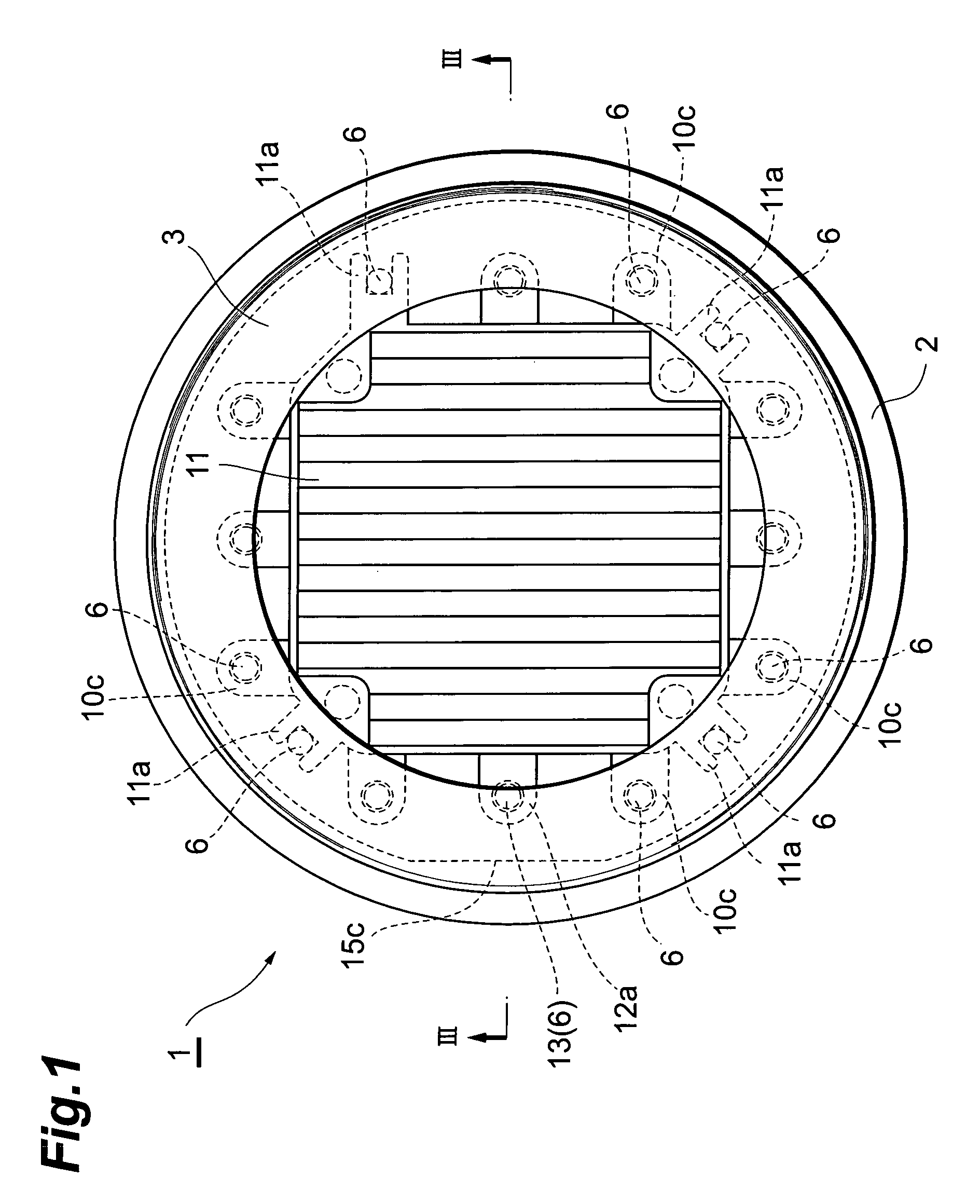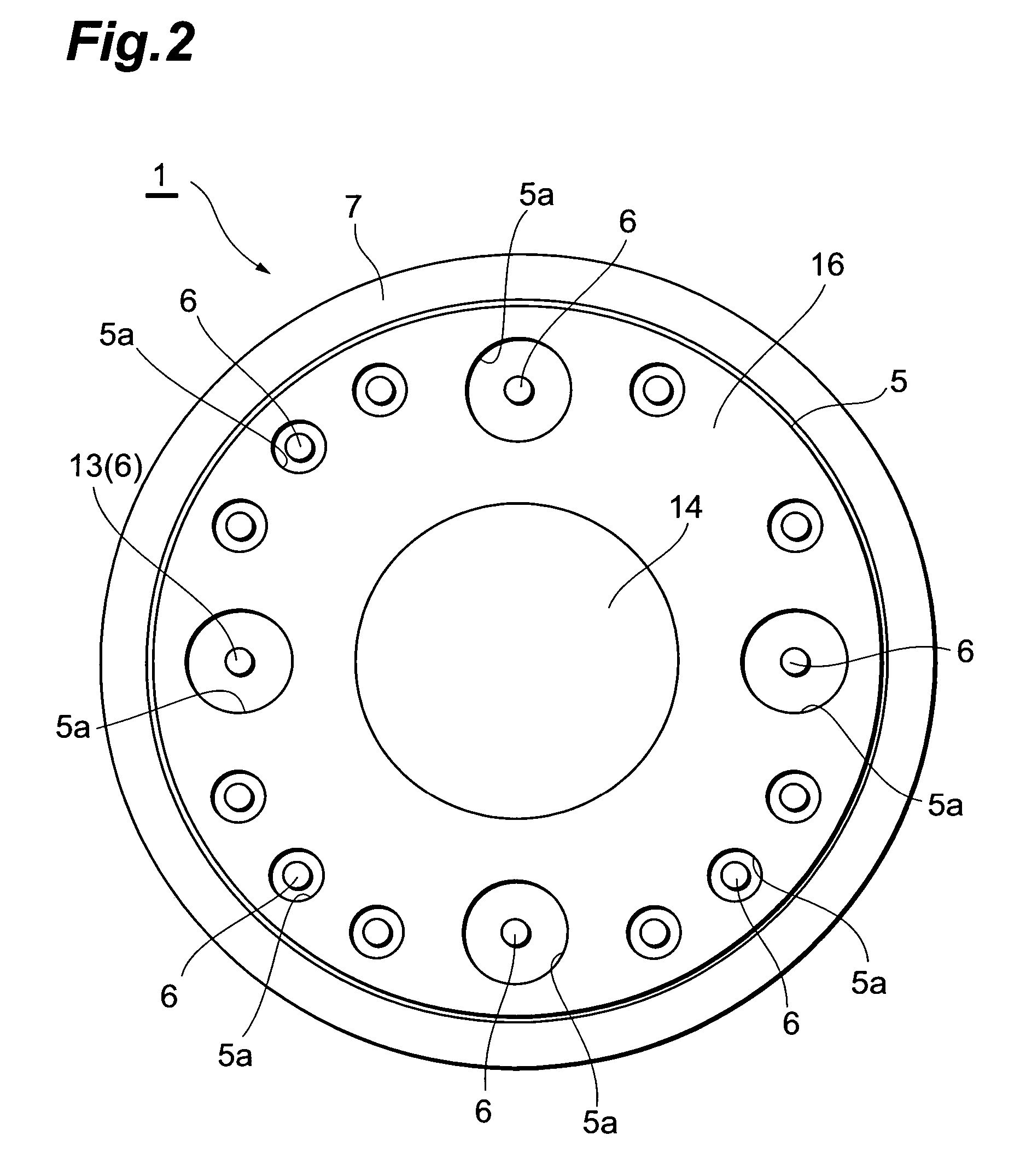Photomultiplier and radiation detector
a radiation detector and multi-layer technology, applied in the field of photomultipliers and radiation detectors, can solve the problems positional precision, flatness, levelness, etc., and achieve the effect of low resistance to vibration
- Summary
- Abstract
- Description
- Claims
- Application Information
AI Technical Summary
Benefits of technology
Problems solved by technology
Method used
Image
Examples
Embodiment Construction
[0035]Preferred embodiments of this invention's photomultiplier and radiation detector shall now be described with reference to the drawings. The terms, “upper,”“lower,” etc., in the following description are descriptive terms based on the states illustrated in the drawings. In the drawings, portions that are the same or correspond to each other are provided with the same symbol and overlapping description shall be omitted.
[0036]FIG. 1 and FIG. 2 are a plan view and a bottom view, respectively, of an embodiment of a photomultiplier by this invention, and FIG. 3 is a sectional view taken along line III—III in FIG. 1. In FIG. 1 to FIG. 3, a photomultiplier 1 is arranged as a device that emits electrons upon incidence of light from the exterior and multiplies and outputs the electrons as a signal.
[0037]As shown in FIG. 1 to FIG. 3, the photomultiplier 1 has a metal side tube 2 with a substantially cylindrical shape. As shown in FIG. 3, a glass light receiving plate 3 is fixed in an air...
PUM
 Login to View More
Login to View More Abstract
Description
Claims
Application Information
 Login to View More
Login to View More - R&D
- Intellectual Property
- Life Sciences
- Materials
- Tech Scout
- Unparalleled Data Quality
- Higher Quality Content
- 60% Fewer Hallucinations
Browse by: Latest US Patents, China's latest patents, Technical Efficacy Thesaurus, Application Domain, Technology Topic, Popular Technical Reports.
© 2025 PatSnap. All rights reserved.Legal|Privacy policy|Modern Slavery Act Transparency Statement|Sitemap|About US| Contact US: help@patsnap.com



